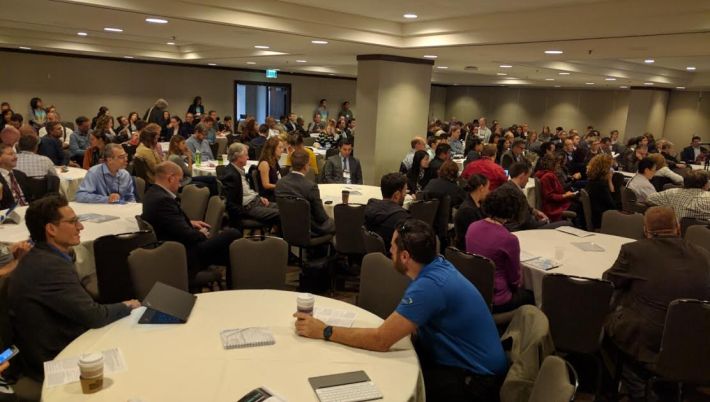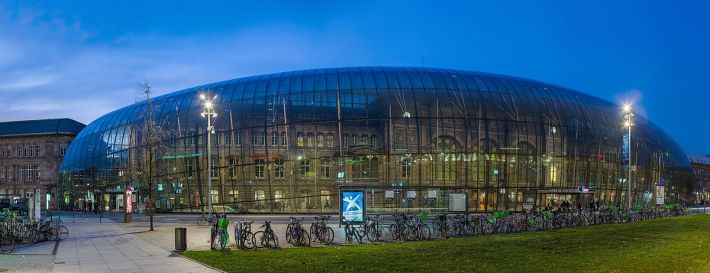
The Rail~Volution conference at the San Francisco Hyatt concluded yesterday with three hours of presentations and break-out meetings about California High-Speed Rail. The focus: how to build the communities we want around HSR stations in Los Angeles, San Jose and Fresno. An important part of that was to learn from the experts: the French designers who have already developed and built beautiful, place-making stations in Strasbourg, Lille and other cities in France.
From the Rail~Volution guide:
High-speed rail has transformed cities and regions around the world. Now it’s our turn. California has begun its ambitious investment in high-speed rail. How our we building our high-speed rail stations? What can we learn from France and other countries? How can we put those ideas to work in Fresno, San Jose and Los Angeles? Hear from national and global experts on issues related to design, governance and balancing major new transit infrastructure with the land use and development opportunities created by high-speed rail.
Before heading to the breakout sessions for details on the planned California stations, attendees heard from some domestic experts. Robert Cervero, Professor and Chair of the Department of City & Regional Planning at UC Berkeley, said that HSR has its biggest impact on certain economic sectors, including "...finance, business services, consulting firms, architects, engineers--those who depend on face to face contact," he said. And that, he explained, means HSR will have the most impact where those types of firms cluster, such as the central business districts (CBD) of San Francisco and Los Angeles.
"HSR will allow things that take place in a CBD to flourish," he said. He also said it will help San Francisco and San Jose businesses access a larger labor market, since it will enable people to commute from farther away. However, he cautioned that, going by examples in Japan and Taiwan, impact will be less impressive in secondary cities. "It's not to say you won’t get wider economic benefits, but the bigger impacts will be in the CBD of the [big] urban centers." But, he cautioned, that can also lead to more sprawl if developers build the wrong kinds of communities around stations in exurban areas.
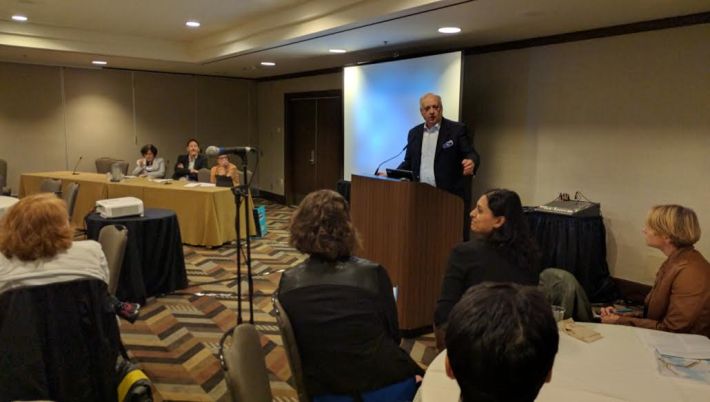
"An HSR system can be a revitalization tool; it can be a tool to concentrate development in a sustainable way," said Dan Richard, the Chair of the California High-Speed Rail Authority. He acknowledged there's a danger of developers gobbling up agricultural land to build ranch houses, thereby creating sprawl, if highly paid workers can then drive short distances to a huge park and ride and commute to downtown San Francisco. He explained how he created a land-use committee of the HSR Authority to work on preventing that. But "trying to have statewide-level land use control is a huge conflict waiting to happen. We have to have carrots and sticks. We have to bring things to local communities to help with planning and implementation."
Part of that, Richard and other presenters explained, is to help communities develop stations that are integrated with downtowns, and which are well connected to local bus and light rail transit. That said, he is convinced building it to Fresno and Madera and other cities of the Central Valley is key to transforming and diversifying the economy of the entire state. "We get asked all the time why aren’t you building a straight line from Los Angeles to San Francisco...the purpose is to connect the economic regions of our state and we have faced under-investment in the Central Valley, which has three of the five most impoverished regions in the US." It's also about health, he said. "21 percent of the children in the C.V. have asthma. The Central Valley was once described of Appalachia west of the Mississippi, but Appalachia has more economic diversity."
His vision is for HSR to become a tool for creating a whole new economic base and he is already working with the universities in Fresno and Bakersfield to develop rail engineering training centers. As he put it, when the rest of the country sees the first true HSR system running in California, every state is going to want its own system--and California will become the center of that new industrial sector. "The computer industry that grew up in Silicon Valley blossomed out of the academic institutions. Aircraft grew up around USC and Caltech... HSR will also drive advances in electronics, aerodynamics, acoustics... UC Bakersfield and Fresno should be training engineers to create a whole new economic base."
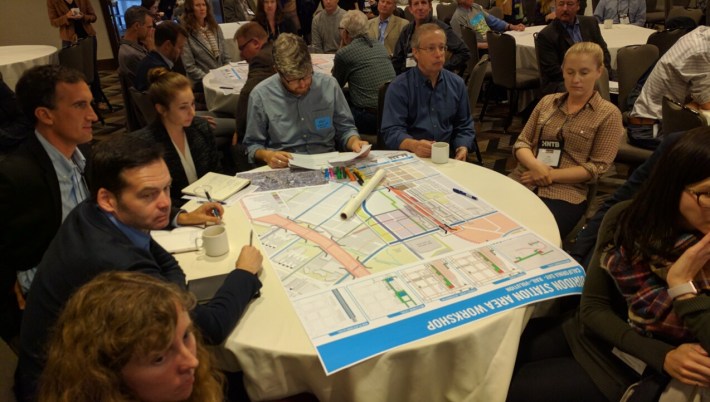
And all of that, he said, is key to fighting greenhouse gas emissions, by electrifying California's--and then America's--transportation system, from electric cars, to HSR, to local transit. "We are blessed with solar and hydro power in California," he said, to power the expanding systems.
It's quite a vision. But, of course, first thing's first--and key is developing and expanding HSR stations that will become focal-points of their cities. Rail~Volution attendees broke into groups that looked at developments at Union Station in Los Angeles, the HSR station and linkages that will be developed in Fresno, and the work to prepare Diridon Station in San Jose.
Diridon, like Union Station in LA, has the challenges of integrating LRT, Metro rail, commuter rail, bus services and HSR, while striving to keep everything pedestrian friendly and connected to downtown. Etienne Tricaud, Chief Executive Officer of AREP, an engineering consulting firm in Paris, talked about the challenges of expanding Strasbourg station for the arrival of the TGV (Train à Grande Vitesse) in 2009.
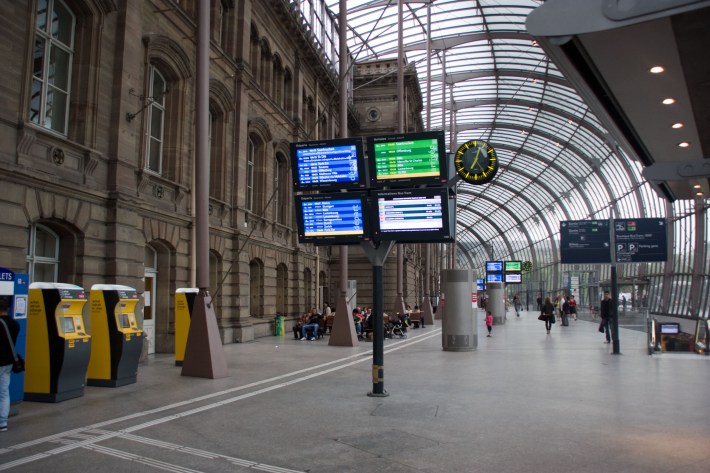
AREP had to integrate the Metro/LRT systems with the TGV, but without destroying the historic frontage. That was done by building an arching, glass shed over the front of the station. "It gives protected access to underground transportation, Metro and the car park," he said. "Before they had to walk outside in the wind and rain." While wind and rain are less of an issue in San Jose, one can imagine a similar approach to expanding Diridon, to give a comfortable, air-conditioned envelope to travelers waiting for trains and making connections.
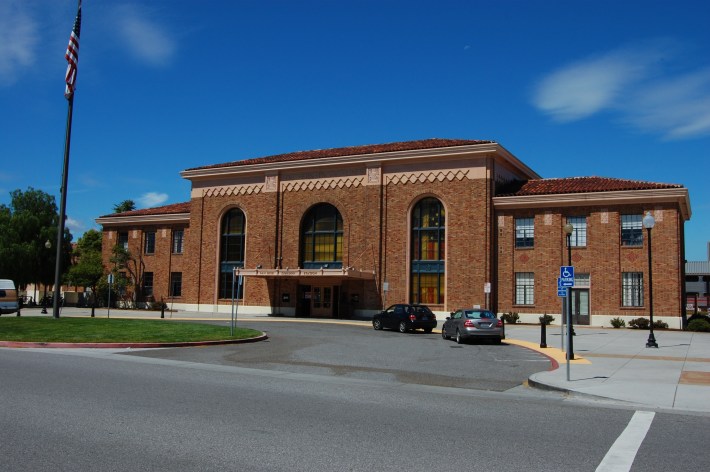
He also spoke about the TGV and Eurostar station in Lille, France. Engineers wanted to build a station many miles from the city center, to avoid curves and keep the trains running at maximum velocity. But the mayor of Lille fought for the station. Today, the TGV and Eurostars running between London, Paris and Brussels are visible from the city center through a large glass shed that envelops the platforms. Express trains that don't stop at Lille flow through the curve and through the city center seamlessly and quietly. And, as hoped, the station is a destination in itself, and an integral part of the city. "We have over a million square meters of office, concert hall, retail, and housing space around the station in Lille," said Tricaud.
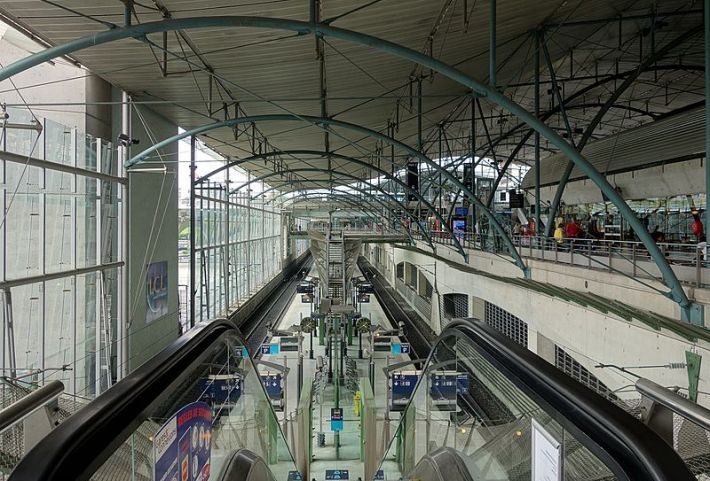
Can California's HSR system revitalize the centers of San Jose, Fresno, and other cities on the route? As Richard put it, "Every technology is a tool that can be used for good or harm. An HSR system can be a revitalization tool and it can be a tool to concentrate development in a sustainable way." The only thing that worries him, he said, is the possibility of doing it wrong.
And key to doing it right in California, in Streetsblog's view, is to continue studying mature HSR systems all over the world.
